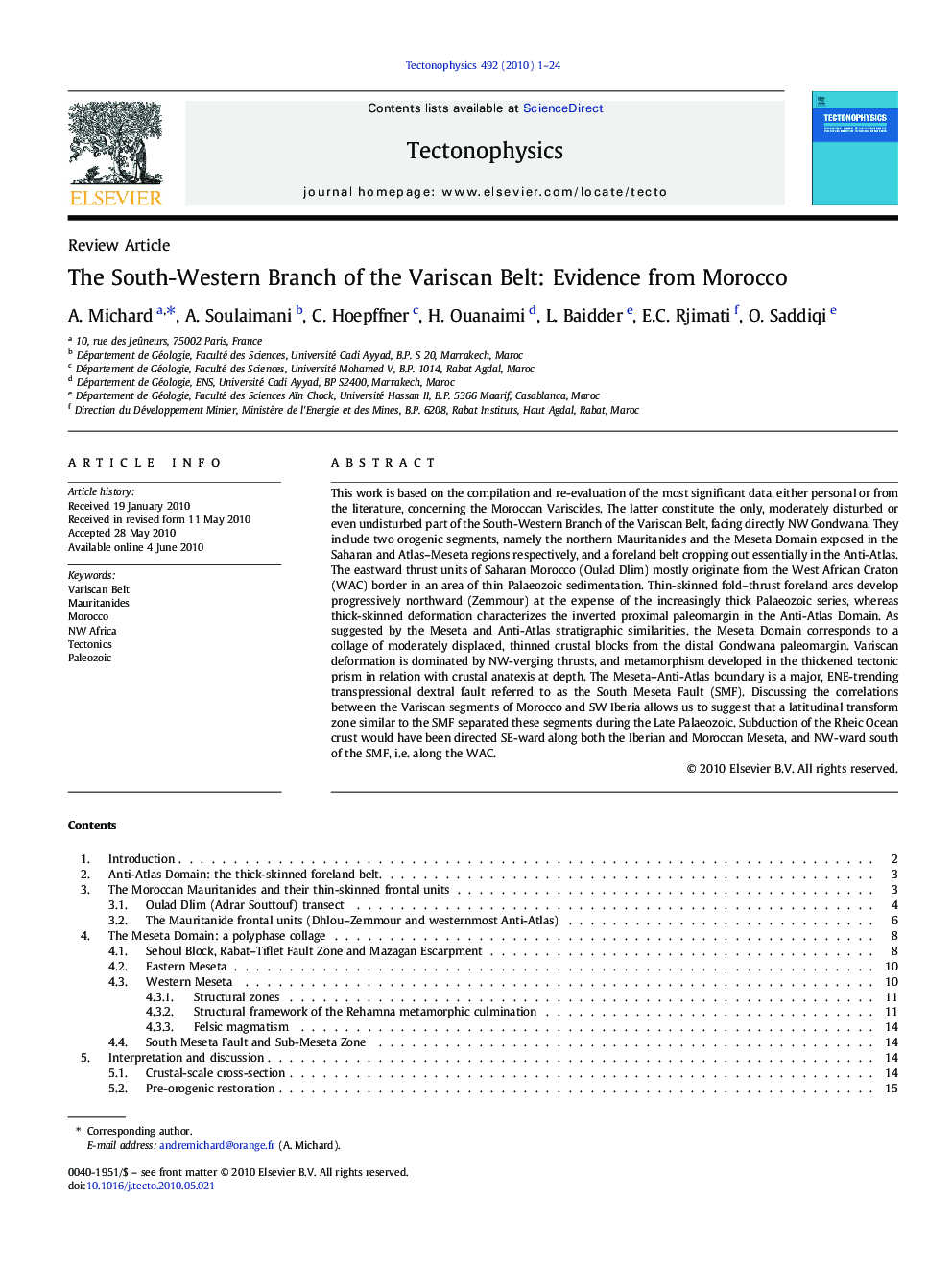| کد مقاله | کد نشریه | سال انتشار | مقاله انگلیسی | نسخه تمام متن |
|---|---|---|---|---|
| 4693306 | 1636862 | 2010 | 24 صفحه PDF | دانلود رایگان |
عنوان انگلیسی مقاله ISI
The South-Western Branch of the Variscan Belt: Evidence from Morocco
دانلود مقاله + سفارش ترجمه
دانلود مقاله ISI انگلیسی
رایگان برای ایرانیان
کلمات کلیدی
موضوعات مرتبط
مهندسی و علوم پایه
علوم زمین و سیارات
فرآیندهای سطح زمین
پیش نمایش صفحه اول مقاله

چکیده انگلیسی
This work is based on the compilation and re-evaluation of the most significant data, either personal or from the literature, concerning the Moroccan Variscides. The latter constitute the only, moderately disturbed or even undisturbed part of the South-Western Branch of the Variscan Belt, facing directly NW Gondwana. They include two orogenic segments, namely the northern Mauritanides and the Meseta Domain exposed in the Saharan and Atlas-Meseta regions respectively, and a foreland belt cropping out essentially in the Anti-Atlas. The eastward thrust units of Saharan Morocco (Oulad Dlim) mostly originate from the West African Craton (WAC) border in an area of thin Palaeozoic sedimentation. Thin-skinned fold-thrust foreland arcs develop progressively northward (Zemmour) at the expense of the increasingly thick Palaeozoic series, whereas thick-skinned deformation characterizes the inverted proximal paleomargin in the Anti-Atlas Domain. As suggested by the Meseta and Anti-Atlas stratigraphic similarities, the Meseta Domain corresponds to a collage of moderately displaced, thinned crustal blocks from the distal Gondwana paleomargin. Variscan deformation is dominated by NW-verging thrusts, and metamorphism developed in the thickened tectonic prism in relation with crustal anatexis at depth. The Meseta-Anti-Atlas boundary is a major, ENE-trending transpressional dextral fault referred to as the South Meseta Fault (SMF). Discussing the correlations between the Variscan segments of Morocco and SW Iberia allows us to suggest that a latitudinal transform zone similar to the SMF separated these segments during the Late Palaeozoic. Subduction of the Rheic Ocean crust would have been directed SE-ward along both the Iberian and Moroccan Meseta, and NW-ward south of the SMF, i.e. along the WAC.
ناشر
Database: Elsevier - ScienceDirect (ساینس دایرکت)
Journal: Tectonophysics - Volume 492, Issues 1â4, 20 September 2010, Pages 1-24
Journal: Tectonophysics - Volume 492, Issues 1â4, 20 September 2010, Pages 1-24
نویسندگان
A. Michard, A. Soulaimani, C. Hoepffner, H. Ouanaimi, L. Baidder, E.C. Rjimati, O. Saddiqi,